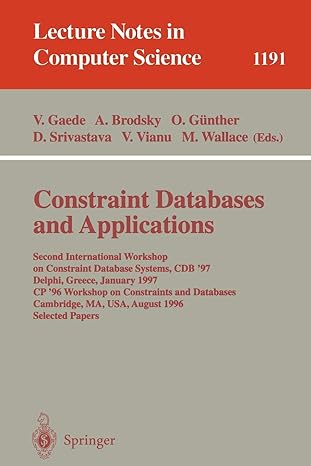Question
Course: Statistics and Data Analysis Reminder: For many relatively simple probability questions such as these, you should find that the math and calculations involved are
Course: Statistics and Data Analysis
Reminder: For many relatively simple probability questions such as these, you should find that the math and calculations involved are not at all onerous. The trick is recognizing which concepts apply, and therefore which tools (e.g. formulas) are most appropriate for the job. It is equally important to recognize when the tools in your toolbox do NOT apply! This is so that when looking at data in the real world, or if you are looking at someone else's interpretation of data, you recognize when people are not using or interpreting the data appropriately.
For any confidence interval questions, you should provide a properly stated confidence interval statement as your answer. See lectures for examples of what is meant by this. As a hint: remember that it's not simply a matter of providing a range of numbers.
For confidence interval problems, do not use the bootstrap sampling technique unless explicitly asked to do so.
Part 1A
In a recent year, a random sampling of 56 farms in one area of the midwest were noted to produce an average 177 bushels of corn (per acre) with a standard deviation of 12.5. The distribution was approximately normal. Answer to 2 decimal places.
1. It is felt that if a given farm is unable to produce 155 bushels per acre, they will be non-profitable for that year. What percentage of farms would be expected to be non-profitable?
2. Farms that produce between 160 and 190 bushels per acre are considered to be at "reasonable profits". What percentage of farms can be expected to do so?
3. Farms that are below the 20th percentile in production of corn bushels qualify for various government assistance programs. How many bushels per acre does this correspond to?
Part 1B
In a different part of the country, where the soil is less hospitable, the corn production is lower. In this case, in a sampling of 36 farms, the mean production is 164 bushels per acre, with a standard deviation of 14.7. Answer to 2 decimal places.
1. Provide 90%, 95%, and 99% confidence intervals for these values. Remember to provide your answer in the form of a properly phrased confidence interval statement.
2. Suppose the sample size was reduced by 10%. How would this affect the confidence interval? You don't have to provide a quantitative answer here. Simply indicate if it would go up, down, or remain approximately the same. However, don't simply answer "up/down/same" - you must explain your reasoning. That is, provide some explanation as to how modifying the sample size affects confidence intervals.
Part 1C
A entrepreneurial high school student is running a (highly illegal) mini-casino out of his basement after school. In one of his games, he has players flip two coins. If they get 2 heads, they win $20. If they get 1 head out of the two coins, they win $10. If they get 0 heads, they must pay the house $30.
1. How much can a player expect to win or lose in the average game?
2. Who is going to make money in the long run, the people playing the game or the student running the casino? Hint: This problem would fall under the category of "expected value".
Part 1D
For this problem, modify the bootstrap R script discussed in lecture as needed. Shown here are some values representing the time (in days) to build a Liberty ship during World War II. 42.4, 43.6, 41.0, 39.8, 44.7, 42.1, 41.8, 42.2 Using the bootstrapping sampling technique, provide the 95% confidence interval for the population of values. As always, be sure to paste the R script you used to generate this result into your document
Step by Step Solution
There are 3 Steps involved in it
Step: 1

Get Instant Access to Expert-Tailored Solutions
See step-by-step solutions with expert insights and AI powered tools for academic success
Step: 2

Step: 3

Ace Your Homework with AI
Get the answers you need in no time with our AI-driven, step-by-step assistance
Get Started


